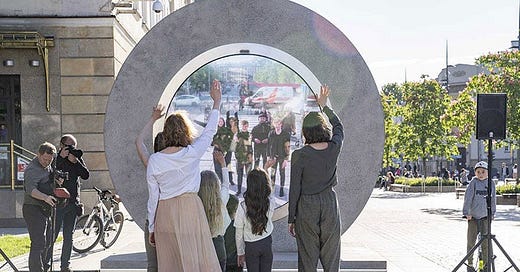A few months back,
wrote about this amazing portal connecting two cities in two different nations, in a manner of speaking.Here’s Mike:
In 2021, Vilnius (Lithuania) and Lublin (Poland) built these livestreaming 'portals' - oh come on, let's not mess about, they're Stargates - allowing residents to wave to each other from 600km away but also be right there, face to face.
This eventually sent my brain down the following rabbit hole. I want to share some of this wonder I still feel with you today.
I want to set the stage way back. For nearly all of our existence, we humans have looked at things that are far away with only our eyes. Our ancient ancestors studied cloud formations to know whether it was likely to rain, intensely studied far-away animal herds to determine where they were going next, and distant fires that might be getting closer.
We also looked further out than our little terrestrial sphere.
This was useful! You could reliably meet someone somewhere when the moon was full …
Keep reading with a 7-day free trial
Subscribe to Goatfury Writes to keep reading this post and get 7 days of free access to the full post archives.




